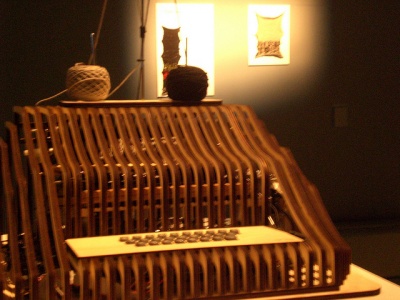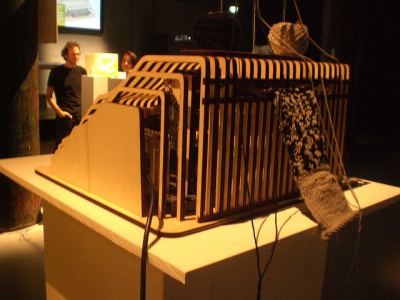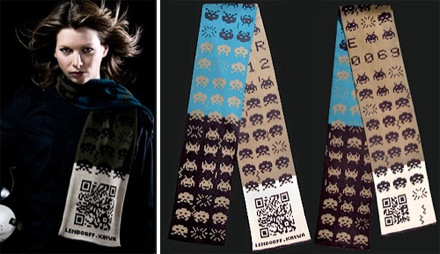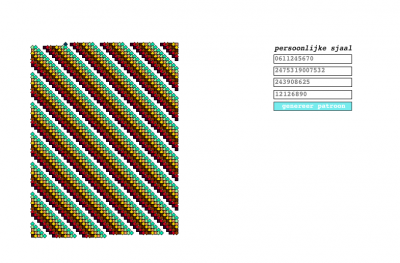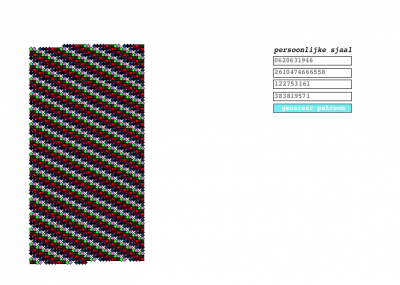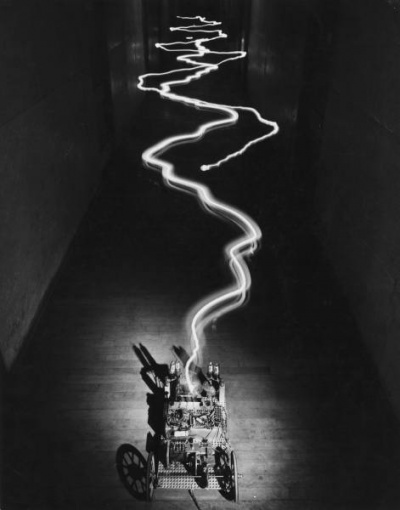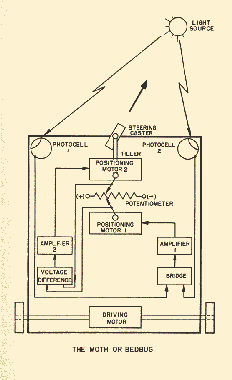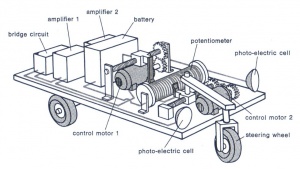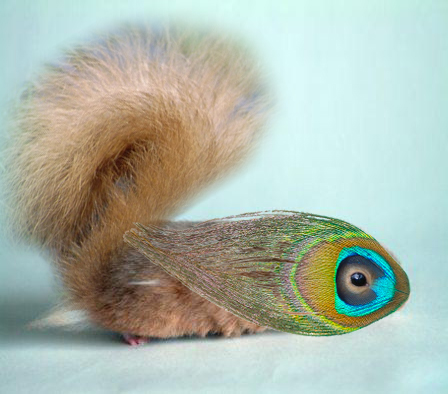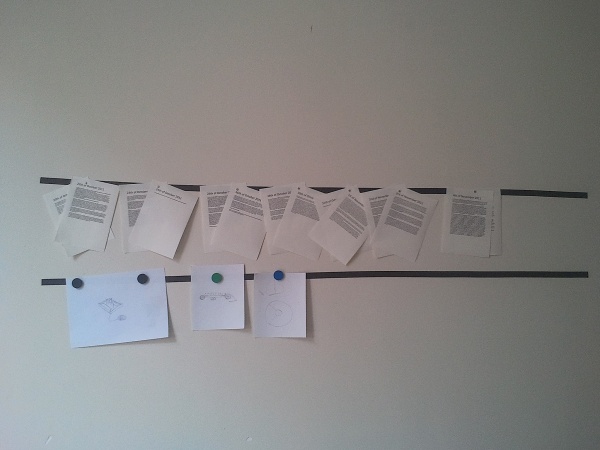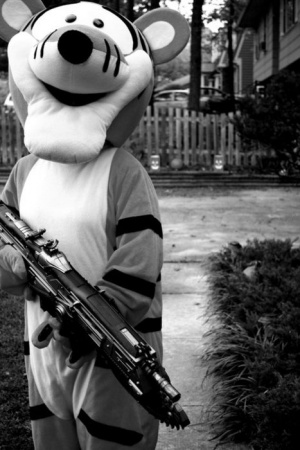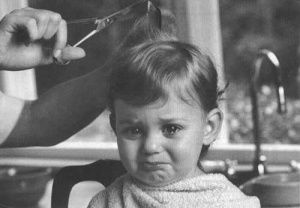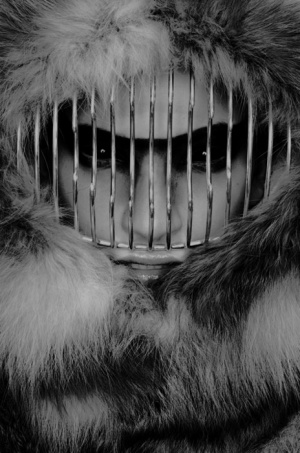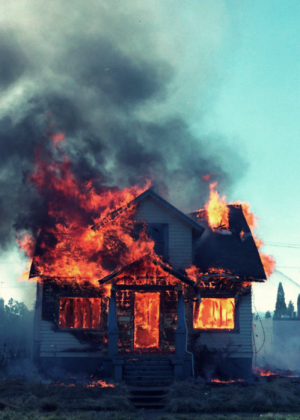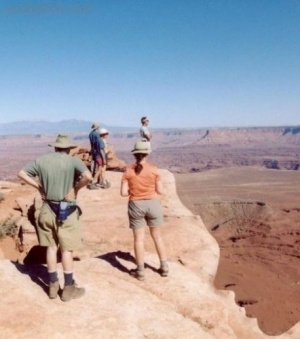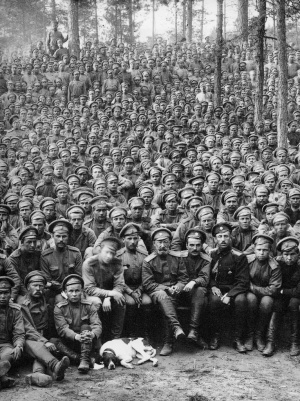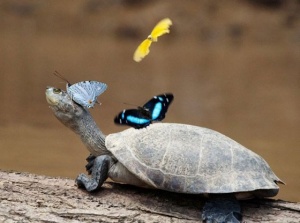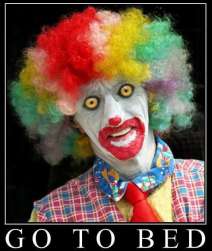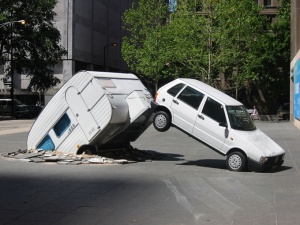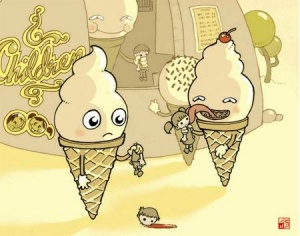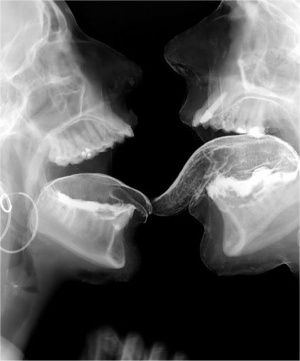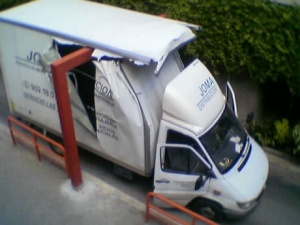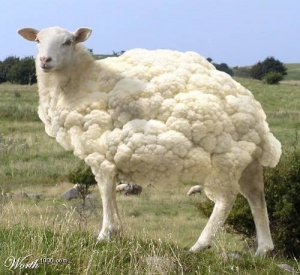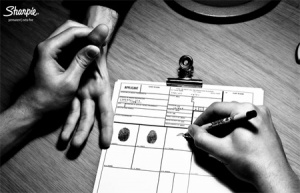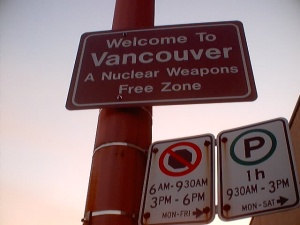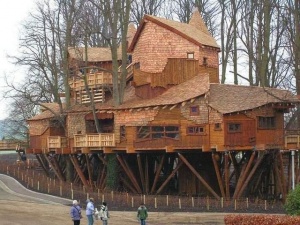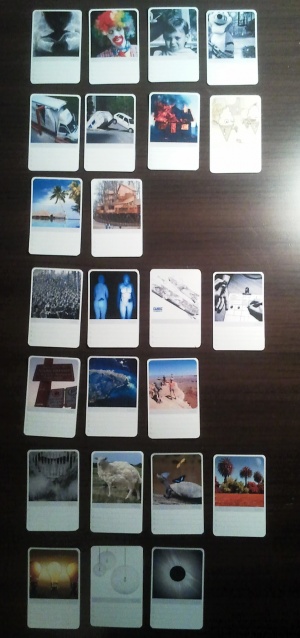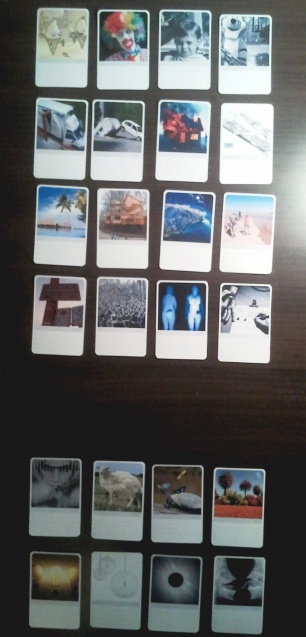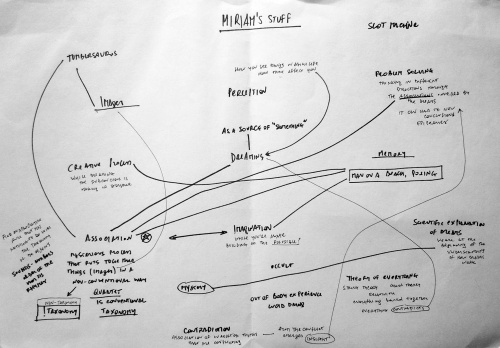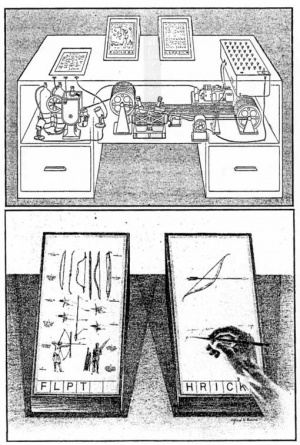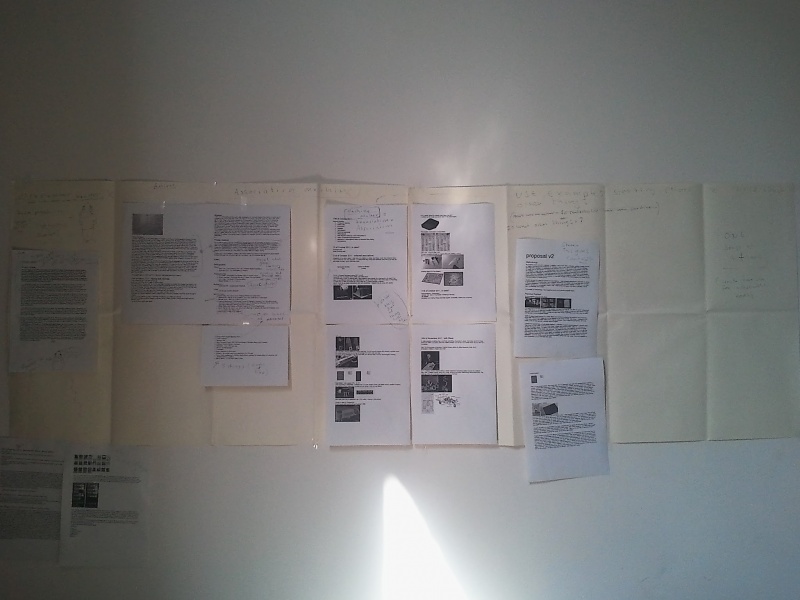User:Mirjam Dissel/collected notes
17th of October 2011
keywords portfolio
- mixing and matching
- collaboration
- provocation
- nostalgia
- reminiscence
- individual experience
- interpretations
- what happens inside your brain (manipulation?)
- reality vs.expectations/perception/lies
- generative & computational meets old fashioned fuzzy feeling
- contradictions
19 of October 2011, in class?
the forget book
dream analogy book
31st of October 2011 - collected associations
Adaptation of my haiku maker, I used one of my dreams to create new things I could have dreamed about.
These sentences look very plausible, in a dreamworld they could have happened, and most of all, they are still written the way I would write them down.
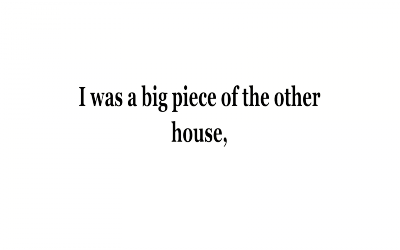
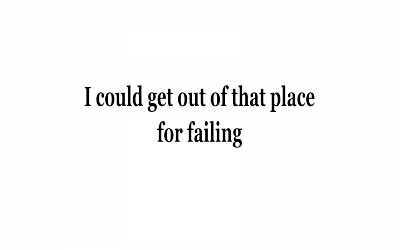
TK730 - eTextiles Workspace group (2011, at V2)
Typewriter that 'translates' what's written into knitted fabric.
The explanation on the V2 website says: "What happens when senses are cross-wired in the brain? Can data convey different meanings when interpreted as a purely visual object? What other ways of interpreting a single piece of data could there be? This is what the TK Series attempts to explore."
Which I think fits my dream descriptions very well, sometimes it happens that you cross-wire people, objects, places.
DIY QR scarf, using an electronic knitting machine. You first have to program the machine, and then move the thread back and forth by moving the carriage from left to right and back .
I'm not so much interested in the QR code itself, but I like the idea of the two "technologies" meeting.
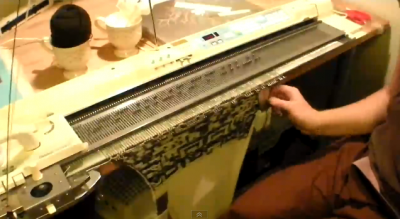
Heart Beats - Julie Legault (2011, at V2)
Time according to heartbeats. It reminds me of my own project (shown just below) where I wanted to explore the relativity of time, depending on what you are doing or how you are feeling
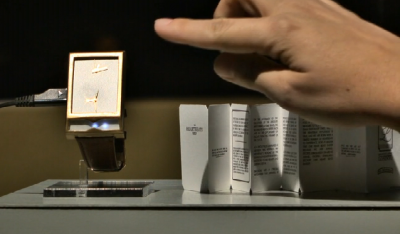
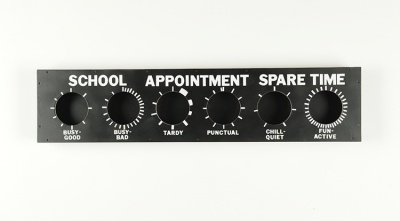
(the metal timer that is supposed to go in the holes is missing in this picture)
Chords to open up connections:
Chord keyset (left hand) by Doug Engelbart, 1968

And a newer version by Infogrip (right hand), the BAT.
3 buttons for the thumb and one for each of the other fingers.

The possible combinations of keypresses.
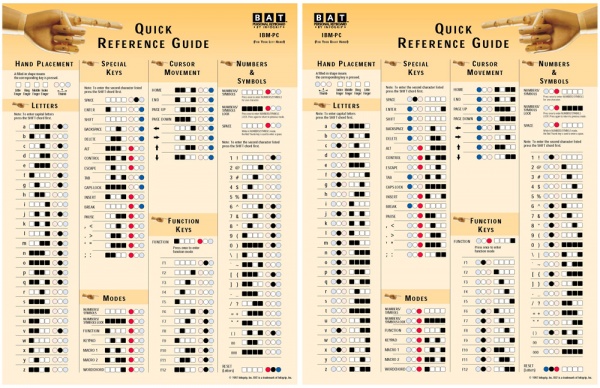
Fold Loud, JooYoun Paek, 2007
Through navigating through an origami piece one creates a melody.
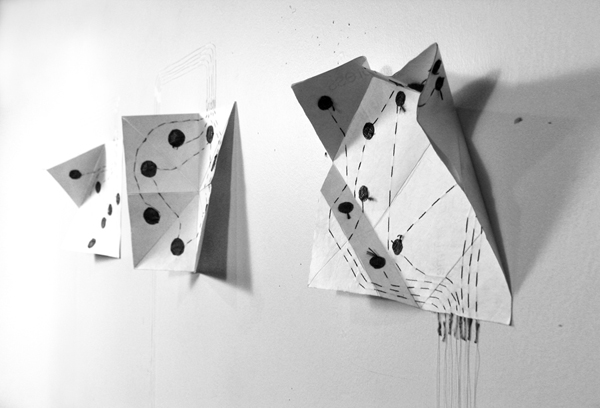
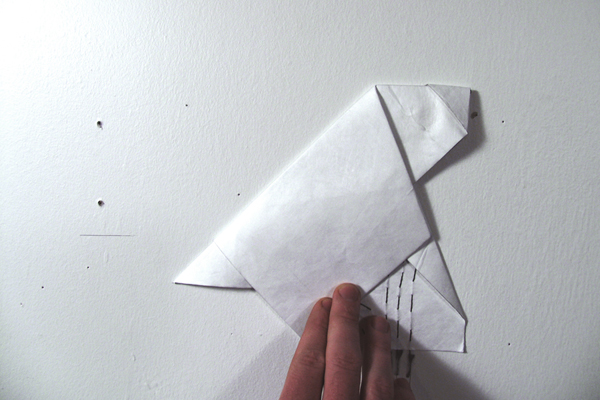
Drawing maps out of my dreams
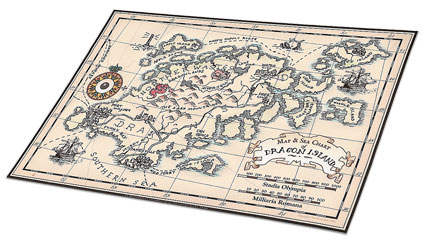

31st of October 2011, in class?
laurie anderson - dreampeace
salvador dali, what is his process of drawing to painting
rss sweater
translation and making things physically tangible. physicallity. dreams are so not that.
31st of October 2011, notes by Laura during presentation
Are you spending much time at dream analysis? Freud's book. Are you interested in the mechanism of dreams?
Interested in how do they're related to one another, also inside the dream.
Are you more interested in the content or the structure?
Not really, places are just place A and place B.
Do you think of working with images? Do you think of doing the reverse (such as from text -> to images)
Subjective patterns, and externalize them and make something completely different
interested in the mechanism of dreams, and how can that be translated into a machine
structure does have a certain pattern and interested in replicating it in some way
Life of Manuel Swedenborg, scientist 1800s, inventor- very rational life- at some point, his dreams started to influence his own behaviour, and his life became influenced by his dreams. He became a theologian, all of a sudden, claiming that god was talking to him, and angels, and stuff.
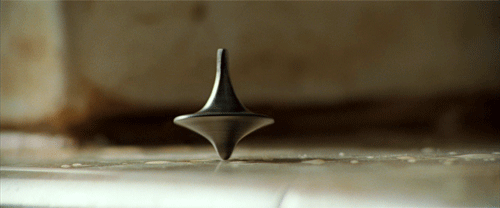
martin housen? version of the helmet of angels.
also William Blake - stuff
If there's a moment in which you claim there's some reality in what you dream - in that moment it becomes interesting to the rest of us / and psychoanalysis retroengineers the claim to reality (an encrypted version of a part of your life you don't wish to know about
Amy says: 'waking life' movie, protagonist in lucid dream
14th of November 2011, group?
visual analogies to processes. retelling. fact that something is fragmentary, through conspiracy or reliving a trauma and trying to make sense of it.
susan hiller - dream mapping 1974
tedtalks lifelogging
tilburg textile museum
16th of November 2011 - with Steve
File:Steve 11-16-2011.ogg to make tangible something that is not there, something impossible to grasp. memories, sound to image (when you make it it's gone), catch the unseen/unheard. you can do it to a certain level, but you can't do it completely.
Ada, The Enchantress of Numbers: Poetical Science
eBook by Betty Alexandra Toole, Ed.D.
emphasis in relation to dreams and draw!
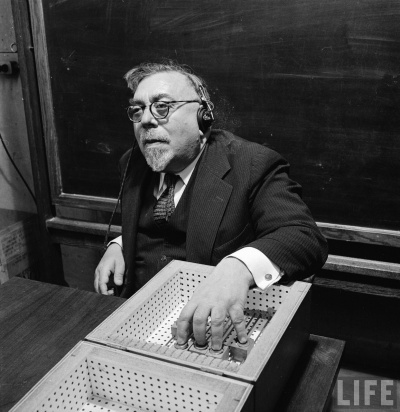
M.I.T professor Norbert Wiener testing a device capable of converting speech sounds into patterns
May 1949, Professor Wiener sitting like a boss, showing his project researching tremors/parkinson. The steering of the cart is decided by the photo cells on the front.
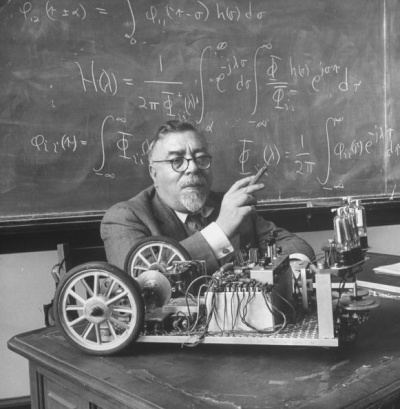
18th of November 2011, with Steve
23rd of November 2011
Went to see Lucid Dreaming in Stedelijk Museum Schiedam - Annotate! + add pictures and movieclips I made

29th of November 2011 - with Aymeric
File:Aymeric29thofnovember2011.ogg roland barthes - the third meaning http://thethirdmeaning.blogspot.com/2007/10/roland-barthes-third-meaning.html
daniel dennett - consciousness explained
part of the book explains how memory works - brain follows different models. orwellian model, etc.
hofstadter - i am a strange loop
mix of science, philosophy, what's the self, brain as a feedback machine, having input (very personal in comparison to dennett, which is scientific)
- navigation
- process of remembering
- objects in dreams. machine that make new machines.
storytelling, navigational system
turn into creative methodology, highlight 3 points, make it look like i'm in control
30th of November 2011 - with Steve in class
File:Steve 11-30-2011.ogg clarify this area of research. focus is really pulling in. research into those area's: memory is created as we remember. i'm inventing as i'm trying to remember, in this way my mind is a translation machine from dreams to memory, creating something physical. through practice i'm finding these things out. key thing!
- Look at Furtherfield, weaving blogs.
how internal things can be articulated/translated/decoded.
quinten for example does the opposite, he is interested how the external becomes internal. afterimage.
email janis about bibliography list about dreams.
to do:
- fix bibliography
- update proposal
7th of December 2011
- who is going to be at the graduation proposal assesment?:
simon, renee aymeric, barend, steve
what will happen?:
they will read proposals and talk about it (will it fly or not)
then they will invite us in. you can bring stuff in to show if you like.
they will tell us then if it needs more work or not.
some people have to resubmit, it's more like clarification.
the whole thing is more like 'how we understand your graduation proposal'
- Reading each others graduate proposals:
can you identify the research question
can you identify the project
why is is necessary
how is it going to be made
In other words:
what is the project
how are they gonna do it
... (something else)
Daan's feedback on proposal:
the 'what' is good.
how it's going to be realized is less clear, maybe it's about the fase we're in.
are the objects going to be in the gallery? no they are prototypes.
need some time before it becomes clear.
it's evident that i need more time to see where it leads.
why is this project necessary. in previous projects it becomes quite clear, bringing people together, memory. this seems more personal. don't know exactly how this relates to collective memory.
--
Inge's feedback on proposal:
three outcomes, pretty clear to inge.
as soon as you go to what have i been doing, it becomes a complete mishmash. be more editorial.
take out the workshop with inge.
take out bulletpoints? (save somewhere else?, sum it up in sentences?)
reads like a form and sketch
Tim Burton -> documentary about his works
Steve:
I can do more analog stuff in the studio and put it all around you.
My feedback on Inge's proposal:
I think the flow of the proposal is very good. Your descriptions, your writings, links one subject seemlessly to another. I admire how in the first part of your proposal you've managed to articulate something so.. well vague actually, and make this feeling you have so universal and easy for me to relate to and understand.
Only between 'I'd like to tell you something I've been thinking about.' and 'Selection of recent work' there seems to be a bit of a jump. Not so much, but it stands out because of the cohesiveness of the rest of the writings.
what you are actually going to do might be a bit more descriptive, a bit more articulated, for dummies so to say.
when reading it more thourougly I get what you want to do, but it's not immediately clear, I think it's also because at this stage you yourself don't have an exact idea of how the final project is going to look like. That's why you have a description of what you will do as a testing ground to further your thesis, so it falls into place. Although, after the very big introduction I'm still very curious about your next steps.
This really captures what you want to do:
"I want to create an experiential environment or
setting in which live performance and storytelling form bridges and gaps with online
interactions. A sound sample is followed by a movement elsewhere in the space, with
characters moving in between screens, perhaps set in motion by the audience moving
between them. A space where that little bit of me connects to that little bit of you. A
small, intimate, yet expansive space."
But it kind of gets swallowed inbetween the words, I would like to see it stand out more in some way. Maybe just by visually giving it more emphasis, or by giving the block "The coming months, I want to [...]" a separate header, to underline the fact that we're getting into the part where you're talking about what you actually want to start working on.
17th of January 2012
Explore the idea of being lost in translation. Maybe it's not about what is left after the translation, but what is missing, the ungraspable.
-
Is the machine dreaming? Desperately trying to tell us his (bad) dreams? (Driven by a different database everyday, or an updating dataset everyday, that is somehow related).
"Pachube ("patch-bay") connects people to devices, applications, and the Internet of Things. As a web-based service built to manage the world's real-time data, Pachube gives people the power to share, collaborate, and make use of information generated from the world around them."
https://pachube.com/
January/February? 2012 Mind Map 1 for Aymeric
front/back
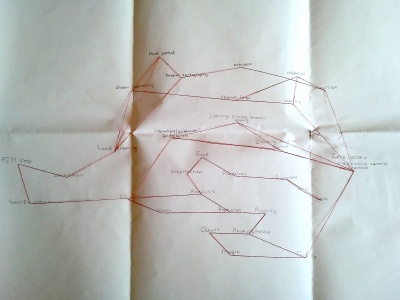
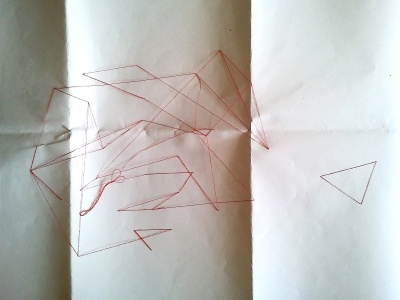
I hoped that by connecting the dots with thread, the deed of connecting would provide me with more details on the backside: which keywords did I connect first to which other keywords? What path did I follow throughout?
I got a couple of different clusters than on the front, but I couldn't really figure out what to do with it.
22nd of January 2012
It's about the short circuiting between dreams themselves, and about dreams and reality (conversations in dreams and things that happen in reality, when waking up).
-
http://apps.pachube.com/porthole/ (augmented reality showing graphs about feeds)
instead of a graph the 'machine' can show you what it's dreaming about depending on the feed's input (images? objects? drawings? meaningless lines on an xyz axis??)
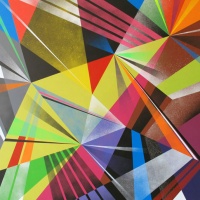
-
By playing with feeds parameters (light, temperature, moisture, etc), one can directly influence what machine is dreaming about, as it also happens when humans are waking up, when the sound of the alarm is woven into the dream as the music you are dancing to, or a nudge of the person next to you can evoke a conversation happening entirely in you head.
-
https://pachube.com/feeds/44040?page=3#graph-builder-container
computerdreams
23nd of January 2012
I dreamed about a hamster-squirrel-peacock crossbreed.
Somewhere here I taped some magnetic tape on the wall and hung my dream descriptions and some drawings on there.
TUTORIAL with.. Michael?
do androids dream of electric sheep? (bladerunner)
how do you break out of the fascination of your own dreams? gerard jeanette - narrative -> text, description, diegesis, act of narrating. dream, description, act of me …
a man and his symbols - jung
--
w. s. burroughs. text, tool for text (documenting dreams?)
but also making it physical..
--
to fix the vocabulary a bit, or to standardize:
the semantic media wiki dream log
to fix the taxonomy, the keywords.
could tagged representation of my dream logs be visualized as a graph to search for networks and network possibilities. helps open it up to other people or other data sources.
20th of February 2012 - Update of collected images
children's playing blocks, reconstruct pathways of ants. I chose this because I was looking for different ways of resembling the network of dreams and the various patterns in between.
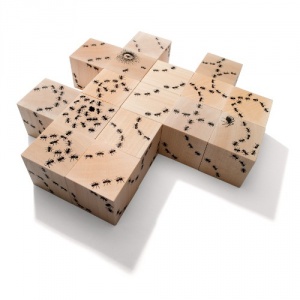
rss newssweaters
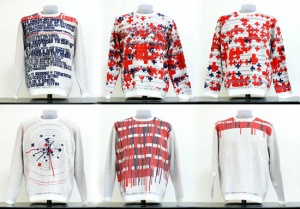
paper circle information cutout
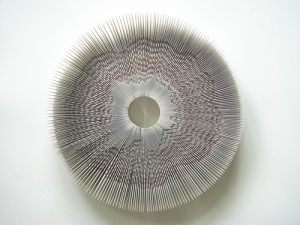
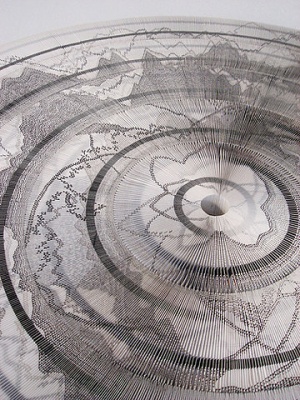
Arizona Dream M2 Jewelry rubber bands. Recycling, repurposing simple objects and seeing them in a different perspective.
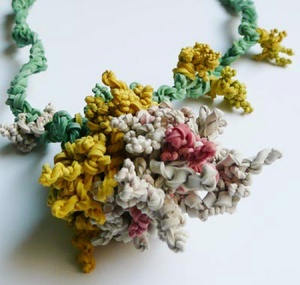
Carolyn Wigston - Construct. Lamps on/off with words. I imagine a project where I could create my own sentences, stories, and seeing what other people left.
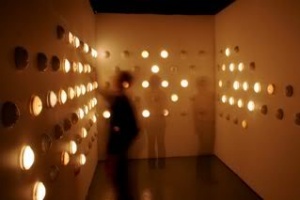
Chromatic painting typewriter. Combining to different mediums that don't seem to belong together, still they fit and have a surprising and new outcome.
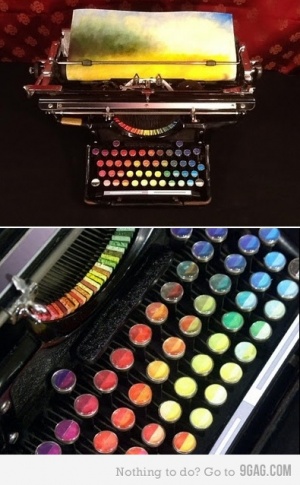
How to make a gif.gif. Combining two unrelated images and leaving you with a dreamlike 'what just happened' feeling.
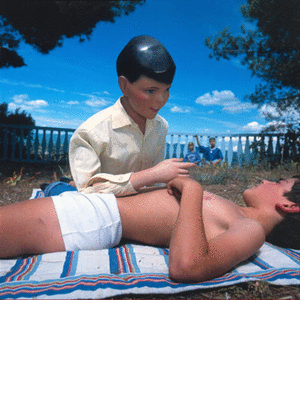
300px
300px
300px
21st of February 2012 - pairs of pictures
Pairing the pictures: describe both pictures AT THE SAME TIME.
What do they have in common, how are they related?
Think ESP game.
Disassociation game: sword -> chair. associative word could be game of thrones, this is a personal association.
I want to find the glue that hold the concepts together. Words are easy to imagine and come up with, later on I could translate these words into images.
21st of February 2012 - seminar with Steve - thesis outline
VIDEOS STEVE
doesn't matter anymore if photography has a claim on the truth, but how well it performs.
THESIS OUTLINE
synopsis - what are you talking about in the thesis - what is your project - relation to previous practice (what why how)
introduce your annotations (narrative of how you understand this book, what you're after) - how do these annotations relate to your project (thesis?)
bibliography?
- - - - - - - - - - - - - - - - - - - - - - - - - - - - - - - - - - - - - - - - - - - - - - - - - - -
While trying to figure out what I wanted to do with my dream descriptions, for my project I've been looking into comparison of images. Putting two non related images together to make a dreamlike collision. I'm not sure exactly where it's going. (Social) network-like dreamspace, or recently I've picked up the Italian Smorfia Napoletana, a dream interpretation system where aspects of dreams get assigned numbers, in order to play the lotto. I wanted something more tangible to work with.
I do however seem to have diverted from my initial project proposal. I've been reading up on dream analysis and I've been confronted with surrealism several times. My original proposal talks more about patterns between my own dreams, translations of my own mind to the outside world and the objects I create from my dreams. I'm not so much making a 'translation machine' anymore as I first envisioned it, as far as that was possible at the time.
I have trouble seeing the common threads and finding a good subject for my thesis that relates to the backbone of the original proposal and what the project eventually is going to evolve into.
--> narrow down bibliography, to help narrow down subjects.
5th of March 2012 - after a tutorial Amy sent me this
http://www.hollanddoc.nl/kijk-luister/documentaire/d/Dreaming-by-Numbers.html
Documentary about La Smorfia Napoletana, images of a small lotto office in Napels and the tragic stories of the people that visit to play the lotto, the neighbourhood, and a historian.
Regie: Anna Bucchetti
Producent: André Bos & Hans Mulder / Armadillo Film
13th of March 2012 - NEW IDEA project + thesis outline
I've tried putting two random images together and get a description out of that that would fit both of the images. This has proven to be quite difficult. In order to force associative thinking I've made a quartet game (see wikipedia: [1] or [2]), two different variants. In one game I've already assigned all the random images to form sets of 4 and colour coded them. While playing the game you can ask the opponent for images that complete one of your sets; but following the original rules, you can only ask for images related to the set you own. This means you have to describe your own set, or one of the images from your hand. In a normal game you could ask: "of the vehicles, do you have the car?", in this game you could ask: "do you have something aggressive?". You may inquire for this card on the basis of your aggressive yellow set, but get a green card in return. Also, a card with a creepy looking clown could be interpreted both as 'funny' and 'scary'. The discussion that takes place while playing was the most interesting part of the game. Also the combinations made really depend on how the game is played, the order the cards are taken from the stack, the way they are traded and how in the end, when you only have a couple of cards left you need to think about your descriptions differently in order not to keep exchanging the same cards. Also, sometimes you can't ask the same card back because you have not found the description yet that describes the whole set. e.g. When someone steals your 'car' card, you can ask it back in the next turn because you might still have your 'bike' card, both belonging to the 'vehicles' set. However, when someone steals your 'clown' card, how will you ask it back with only 'galaxy', 'truck', and 'grand canyon' cards in your hand? This again creates discussion and tries to open up the subconscious more, letting go of preconceptions and freely associating within self-set boundaries.
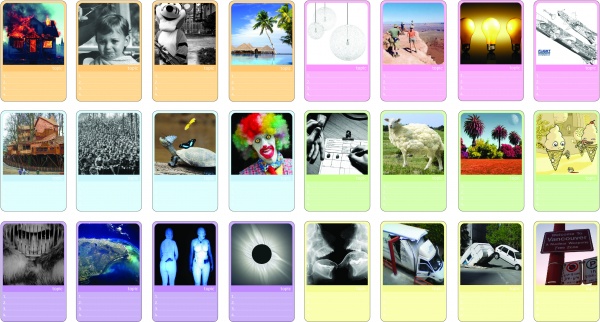
The other game does not have predetermined sets. The goal here is to make sets as you go. This game is much longer and much more difficult. It had some stricter rules of when you can change the topic of a set (after asking a card you set the topic, the topic can only be changed by the opponent when he asks for cards from another set, and receives matching cards from the previously set topic, which now is renamed to the new topic he just inquired about.
Both games are about asking the right question, how to ask it, how to rephrase it to say a similar thing but to mean other things as well and because of that glue multiple images together. But the game has too many flaws, it's playable only as a prototype to find out what I want to achieve by putting these images together. A next step is to make the game endless, to have random images be inserted in the game every time, so the player can reconfigure his hand to his liking and perception and though is challenged enough, but not until boredom or frustration.
At this point I had a hard time imagining an endless game, because the game still had other flaws. I thought about an online game or even an app.
I made another mind map to see what the subjects of my interest were and what the main focus was.
I started out with the following keywords:
dreaming;
image;
perception;
creative process;
imagination;
association;
memory.
Written this means:
I've been reading bits of "The Interpretation of Dreams" by S. Freud. Poet-philosopher Friedrich Schiller gives an example that shows how the creative mind is blocked when dismissing ideas immediately when they enter the gates of our consciousness. When we however leave them to hover and accumulate for a little bit, so that we can assess them all together and see them "in a certain collocation with
other ideas", we unblock the creative process. Similarly, Dr. Freud experimented with people asking them to describe their dreams. The attitude people had towards their own dreams (openly telling every detail, i.e. observant, OR, already passing judgement on their own thoughts and dismissing parts of the dream and emphasizing others) had great effect in interpreting the dream.
In a normal dream state, you cannot deliberately choose what to leave out and what to emphasize. The creative process that happens at that moment is the subconscious making up a storyline. Association is a great part of this. I've always been interested in image association, the "Tumblrsaurus" project focussed on image comparison through establishing links between images by choice of human associative brains. Association is really a mysterious process that puts together things (images in this case) in a non conventional, non taxonomical way.
Of course memory has a lot to do with this. The things that make us associate one thing with another can be so small and subliminal, stored away in 10 memories spread over 20 years of our lives. Seeing as one thing can evoke seemingly unrelated other memories, association is a great memory tool. Memory is another subject that has my interest. "Man On A Beach, Posing" was a project experimenting with family memories and the rewriting of these memories and if this affected the original (and for better or for worse?). Memory and imagination formed an integrated whole in this project. Imagination, the building of the plausible while being awake, is somewhat the counterpart of wild dream state association. And that's how we are back again at association.
TYPE HERE ABOUT HOW I GOT TO THE SLOT MACHINE (see 20th of March)
19th of March 2012 - tutorial with Michael
cross combining card sets between people.
what if you chose the same image for different sets.
Still something is missing. what do i want to generate in people. connection with images? get people to be associating more? maximize that? is that the central experience? finding all the possible associations? (of a max of 32 images, and then keep track of combinations) if a combination is taken (1234) it can't be used anymore, but 1235 can. sense of claiming is quite strong, comes from constraining it.
flickr march 19 2012 as a set. flickr from a particular date, geo tagging.
pack of cards plays up physicalness more. e.g. pack is always 20. limit.
collectible card games. pokémon, magic, baseball cards. connection between collectible cards and digital imagery.
both a fixed set, people working on fixed set, and that you can make your own set.
downside of infinite evolvable images, on screen, infinite imagery on web. undermines image meaning.
different packs.
i've talked about cards, sets, packs.
"Bush realizes that this information cannot be filed and accessed in a normal library format: "The human mind does not work that way. It operates by association. With one item in its grasp, it snaps instantly to the next that is suggested by the association of thoughts, in accordance with some inticrate web of trails carried by the cells of the brain" (44).
Bush's solution is the "Memex": "Consider a future device for individual use, which is a sort of mechanized private file and library...a device in which an individual stores all his books, records, and communications, and which is mechanized so that it may be consulted with exceeding speed and flexibility. It is an enlarged intimate supplement to his memory" (45). Bush imagines a large desk with a keyboard, buttons, levers, and screens to be used for projections. Inside the desk is thousands of pages of microfilm to store all of the information."
[3]
19th of March 2012 - tutorial with Aymeric
jackpot, gambling part is missing. audience is going to see the casino, gambling, risk.
cigarette machine with cards inside?
do you really want to stick with the jackpot? fix gambling problem, justify strong image of gambling to user. goal: what does it mean to make your own set and play with it. like magic, point of making your own deck: it's going to perform better than others, play to win. here it's not the same, the decks are shuffles. you lose intention of making kickass sets, why go through the trouble of making own set when playing with others if there is no such thing as winning or more performative.
how many digits (images), randomly distributed?
leak personal interpretation while playing, very nice. now find good way for access to game. installation should not be decoration. Inge says I could also just pick cards from a screen with all images. and play with that. But this doesn't tap into the subconscious as the random matching of images (and mixing/holding) does. Find ground for installation's (slot machine's) right to exist, instead of just a game or online game (or something else)
19th of March 2012 - tutorial with Timo
Important to save what other people have made. something has to remain.
the lever is starting a query, some sort of associative quest (input keyword?)
Terminology, zap machine instead?
You get two images, forced combination, then you can add two images yourself to complete the set. Kind of like poker.
Having the game is more important than playing the game. The physicality of the installation is very important. When looking at a project on a computer, just moving the mouse a little, it is easy for me to forget all about the project. Already standing up, doing something active and different, makes quite a difference. I don't know if this has anything to do with muscle memory. Intensively using a machine/installation and then also physically receiving something tangible that you could even take home with you, greatly affects the memory. This is exactly what I'm talking about in my project and that's why it is so important the project is not merely shown or played on a computer, but that it in itself gives out memory and association.
every person gets 50 images to choose from, new player is new images.
or: every image stays in the game for about 5 minutes.
experiment and find out all these things. which image sources?
try to figure out shape of slot machine, then I'm already pretty far.
20th of March 2012 - okay more on project and actual thesis stuff
Coming up with the idea of the slot machine has to do with the game aspect that both the quartet and the slot machine possess. Still with the side path of la smorfia napoletana (the Napolitan book of interpretation of dreams or events, the numbers that are interpreted are played in lotto or recited in bingo) in my mind, the idea of a slot machine came natural.
The quartet has a strict taxonomy. The player associates images that are very similar. The winning system of both games is very much alike. The slot machine asks you to align images that are very similar to win, in order to win quartet you have to gather sets of 4 quartet items. By creating a hybrid quartet machine, and inserting random images, I force people to make winning sets in a non taxonomical way.
Here again the mechanism of the slot machine wins from other approaches. By the use of a 'hold' button, the player can create a set at random, dismiss certain images and paste in new ones. The sliding in and out of images is reminiscent of the rough cutting and paste work we all practice while dreaming. Every time the player chooses to exchange a card and let it slide, the narrative continues continues with the remaining cards and the added one(s), forming new associations with the images at hand, as if nothing happened. The usage of the slot machine forces linkage of images, opening up the creative subconscious and allowing a more free and much more personal association.
>>THESIS
>introduction
In the past I have been very passionate about images, the relationship between images, photography and memory. The current exam project has sprung from an obsession with dream narratives.
>outline
For my thesis, passing through a brief history of photography and the perception of imagery in our brain, I would like to address image association, the subconscious as a machine that glues images together. Here I will also explore dream analysis and the mind as an open portal. Inextricably bound up with this is imagination. Imagination, the building of the plausible while being awake, is somewhat the counterpart of wild dream state association. From imagination I dive into memory. Here I will talk about the iteration of memory, and the rewriting of it; this refers to my project 'Man On A Beach, Posing'.
21th of March 2012 - graduate seminar
Quinten:
while talking about perception of image in dreams (map upside down, having anything to do with perception of image without retina?) > upside down glasses, perceptual adaptation
Steve:
synopsis project by monday.
thesis outline on monday (bring scissors, paper, etc! print out collected notes and everything written so far.)
26th of March 2012 - Steve tutorial about thesis
PROJECT OUTLINE
This is what the thesis starts with. Make slotmachine and quartet more explicit, describe what thing I could make. Incorporate previous practice. Keep reader x in mind!
THESIS ABSTRACT
Cut down on diversity of subjects and pin down what it is about, derived from what my project is about. My project is a game that forces association, that knocks out or turns off all you know. ASSOCIATION MACHINE, translation machine.
THESIS
Use examples from my own work and research as a starting point (or way in) to talk about other things. Also value examples like the typewriter knitting machine and my research that gives context to what I want to talk about. Main question now is: what do I want to talk about? This I have to deduct from what the project is about, which I will write in the more expanded thesis abstract.
BIBLIOGRAPHY
Cut down to 5 essential things.
ETC
One step at a time, write timeline for achievable ends.
Find closure for dream diary. Bind it perhaps.
26th of March 2012 - ideas on how to print the quartet cards
tray for cards, usable in normal epson printer [4]
label/sticker printer, could stick it on precut empty cards [5]
receipt printer, print them on a rol and tear off (thicker (thermal) paper?) [8]
business card cutter (puncher) [9] [10]
empty cards for id card printer (or to use blanco for id/credit card sticker) [11]
credit card stickers in cartridge for canon selphy es[12]
credit card size paper for canon selphy es [13] [14] [15]
stickers on sheet [16]
canon selphy es specifications [17] [18] [19]
27th of March 2012 - tutorial with Stock
hold button does hold but also go!
press once to stop, while wheel is spinning.
press again to continue spinning.
is the wheel is already stopped, and then you press hold, it's a conventional slot machine hold.
try out in pygame > slot machine with hold buttons operable with mouse.
then it will be more clear what the fuck i want with the images.
30th of March 2012 - tutorial Renee
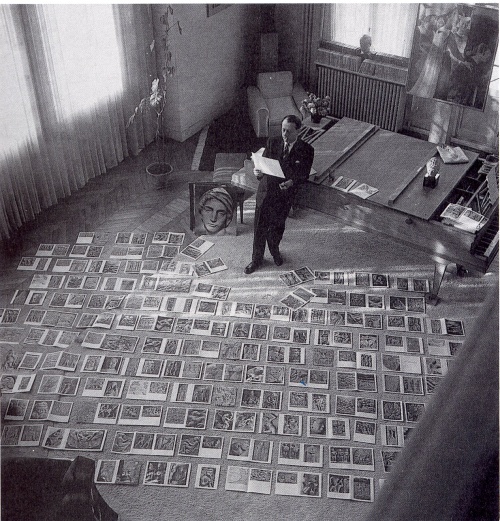
André Malraux, with the illustrations for Le Musée Imaginaire, 1947
Images I use is crucial. Look back at Tumblrsaurus, let that help me. What associations are made. The dream, the collage and then the game.
Maybe add some words (or sentences that describe a feeling?), or full word version where every card is made from words. From there on it might be easier to base the whole set (i.e. associate the cards to one another and to the word) on something more than shapes, colours. I'm aiming more for childhood memories, intimate and personal associations than that all the pictures have a red dot in them for example.
3rd of April 2012 - Thesis just some stuff written down
("The term subconscious is used in many different contexts and has no single or precise definition. This greatly limits its significance as a definition-bearing concept, and in consequence the word tends to be avoided in academic and scientific settings.")
"The idea of the "subconscious" as a powerful or potent agency has allowed the term to become prominent in the New Age and self-help literature, in which investigating or controlling its supposed knowledge or power is seen as advantageous. In the New Age community, techniques such as autosuggestion and affirmations are believed to harness the power of the subconscious to influence a person's life and real-world outcomes, even curing sickness."
To understand association, I must give an explanation of what I think the unconscious is, and how I use it in PROJECTNAME.
I don't believe that there is a possibility to cure one's sickness with one's subconscious, but it is very attracting to think that that there is a background process going on in our brain, neurons firing away, without our conscious mind actually thinking about it in words or perhaps feelings. When we try to remember something forgotten, we can remember by retracing steps, or taking detours in our brains to get to this particular memory. Everything stored in our brain can be accessed by several paths of connected neurons, personal and different for each person. While recollecting a memory of playing with toys, one might also remember a holiday, which was photographed and put in the same photo album with photos featuring your childhood toys. More interesting questions on memory and the rewriting of memory, the iteration of memory, occur here. Is the holiday really a memory? Or is the photograph of the holiday a memory and the rest phantasy?
Back to the unconscious mind;
Carl Jung divides the unconscious into two parts: the personal unconscious and the collective unconscious.
Marie-Louise von Franz is a Swiss psychologist who worked with Jung, "accepted that 'it is naturally very tempting to identify the hypothesis of the collective unconscious historically and regressively with the ancient idea of an all-extensive world-soul" (wikipedia). Whether this can be confirmed or not, I am more interested in the personal unconscious mind. "The personal unconscious includes anything which is not presently conscious, but can be. The personal unconscious is made up essentially of contents which have at one time been conscious but have disappeared from consciousness through having been forgotten or repressed. The personal unconscious is like most people's understanding of the unconscious in that it includes both memories that are easily brought to mind and those that have been suppressed for some reason."
This already goes more towards a Freudian idea of things. He divided the mind into the conscious mind (the ego) and the unconscious mind, of which the 'top layer' is the preconscious: everything you can remember, that is accessible voluntarily. The unconscious was divided into the id (instincts and drive) and the superego (conscience).
"Unconscious thoughts are not directly accessible to ordinary introspection, but are supposed to be capable of being "tapped" and "interpreted" by special methods and techniques such as meditation, random association, dream analysis, and verbal slips (commonly known as a Freudian slip), examined and conducted during psychoanalysis."
how this differs from New Age crap. I only want to talk about _free association_ and _dream analysis_ by Freud and make sure that there is tons of scientific side paths I could explore, but I've chosen this one, and that there is tons of things that take it too far.
ramble ramble
What I want to achieve with PROJECTNAME is to let people tap into their own personal unconscious, let them be able to tell me the story and be amazed and surprised by their choices. I wanted to have it closely related to dreaming, tapping into another world of your own, creating a narrative, mixing and matching of different concept and ideas until they become epiphanies, this all of which you are unaware awake. The discovery of your own stories and the effective way of forcing memories to click in through association is really remarkable if you see it in action. Seeing it second hand through game cards also raises excitement and wonder. When I started developing this project I wrote down everything I dreamed about, every day; and I wondered how I could make these stories interesting and accessible to a crowd. How are other people's personal and often nonsensical stories interesting to others? If you can retrace the steps, if you can see the association in a very simple way, and perhaps not understand it yet, but at least see what goes on in someone's head, makes someone's choices of images in PROJECTNAME very interesting to another person, because it is a glimpse of who this person is and how he/she thinks. This is simply done by lining the images up and naming them individually and giving them a topic. By playing the quartet game you tend to think for the owner of the deck, what could be in this picture? Why is it in this set? I hope it will stimulate a dialogue which not only gives a group insight in another person's mind, but also gives this person insight in his own mind.
9th of May 2012 - quartet cards numbering
If I give each set a unique number (with ABCD for individual cards)
While playing quartet I could ask questions about the cards and set. 'Why does 42B match 42D?' and maybe record it or write it down so it's later available in the archive and I can connect it to set 42 that I've saved with the script.

